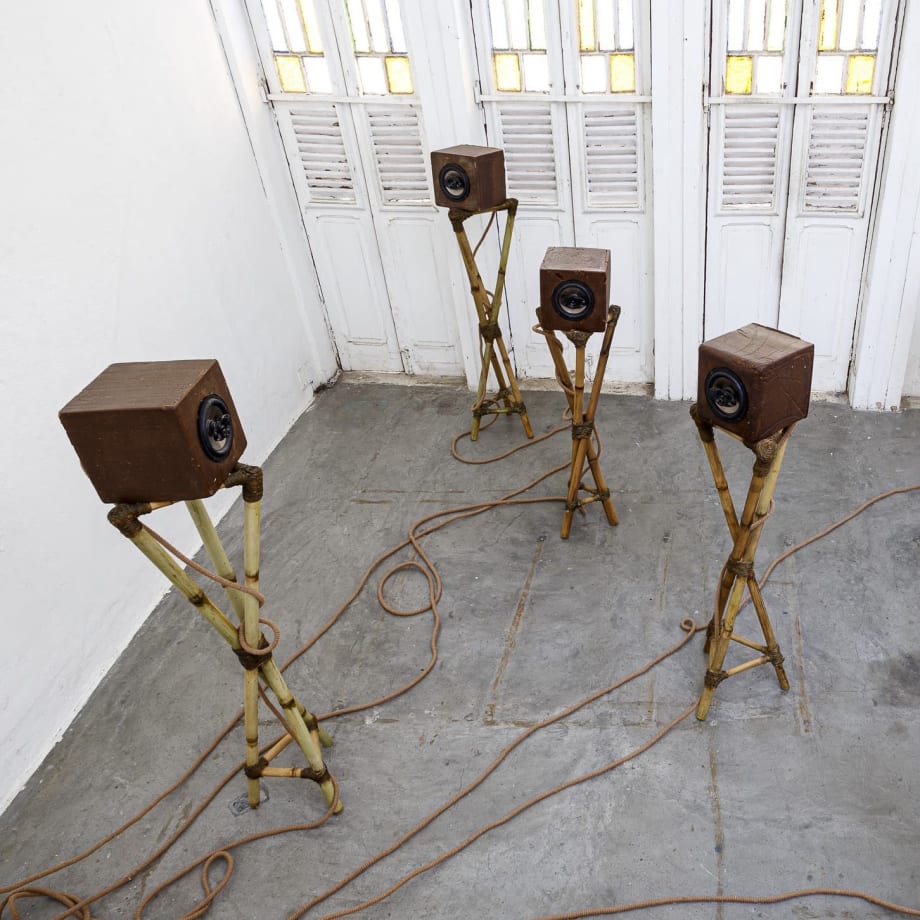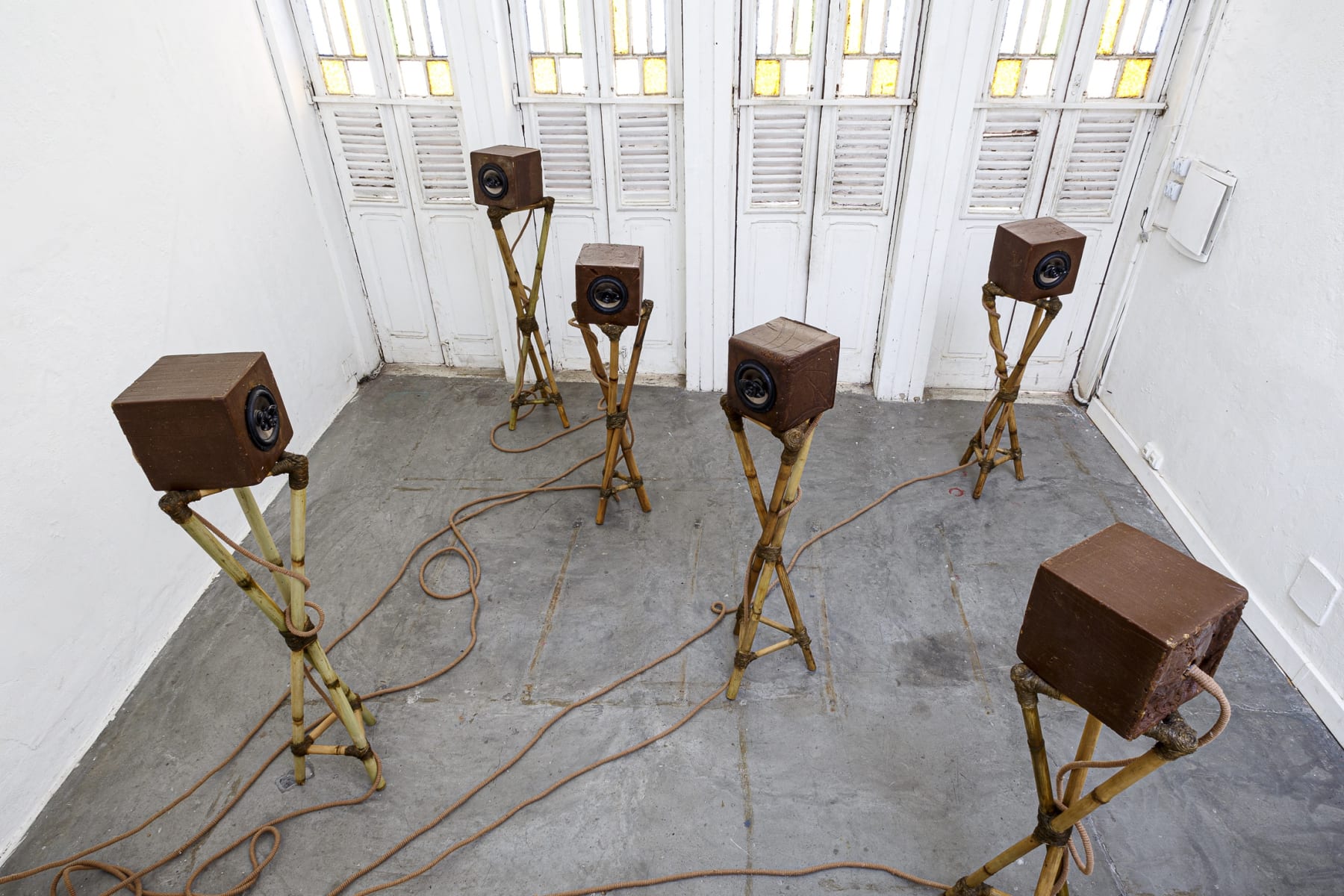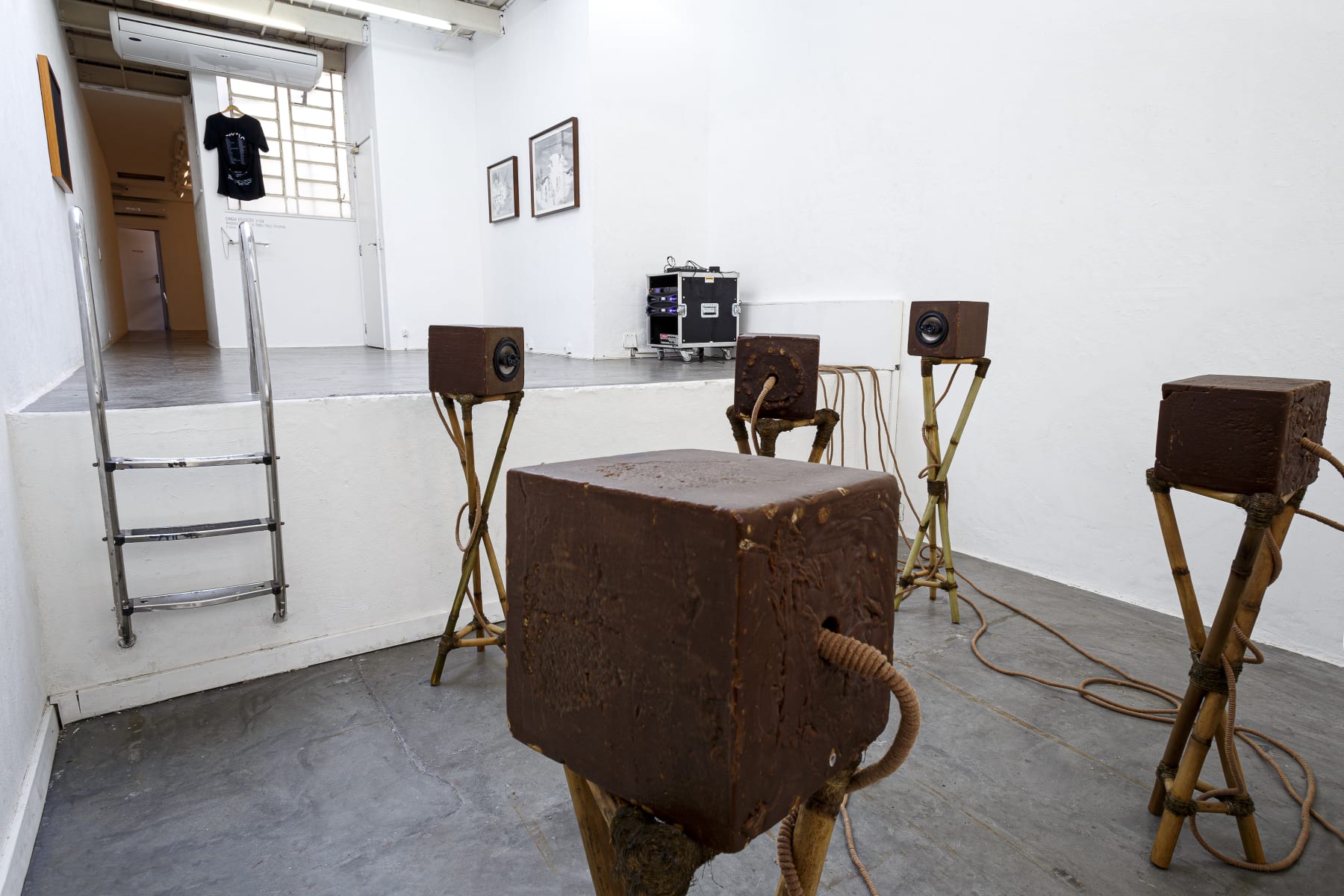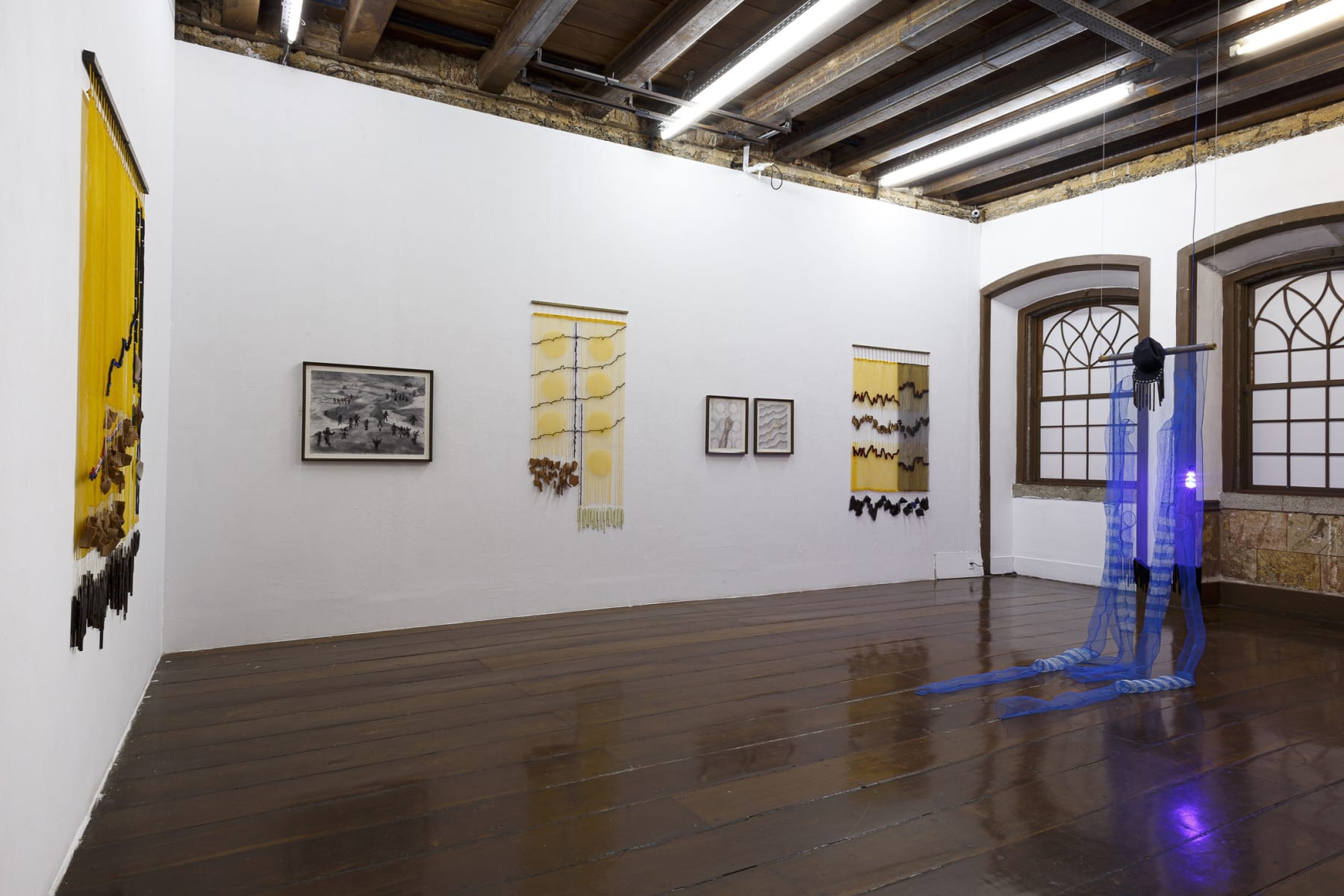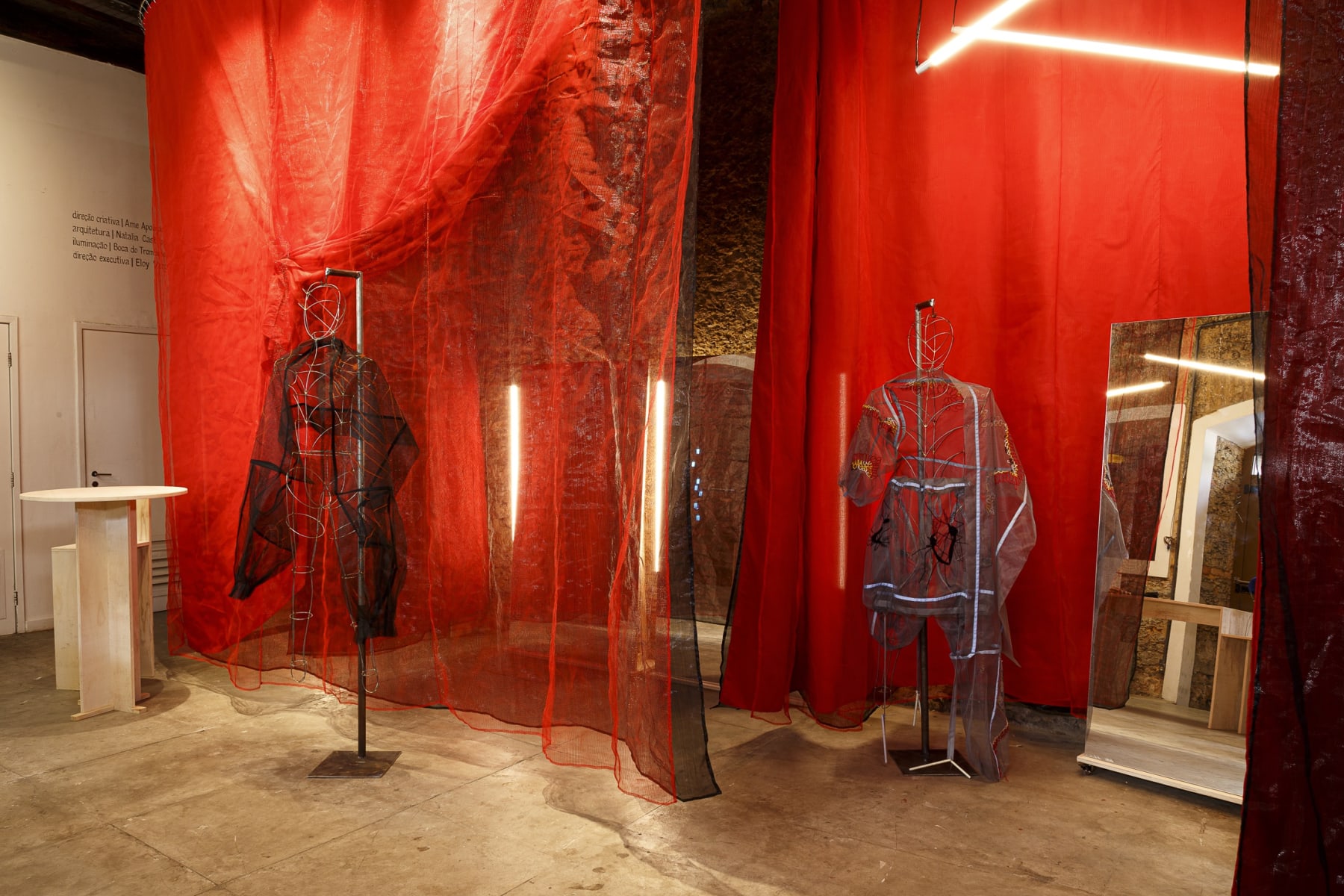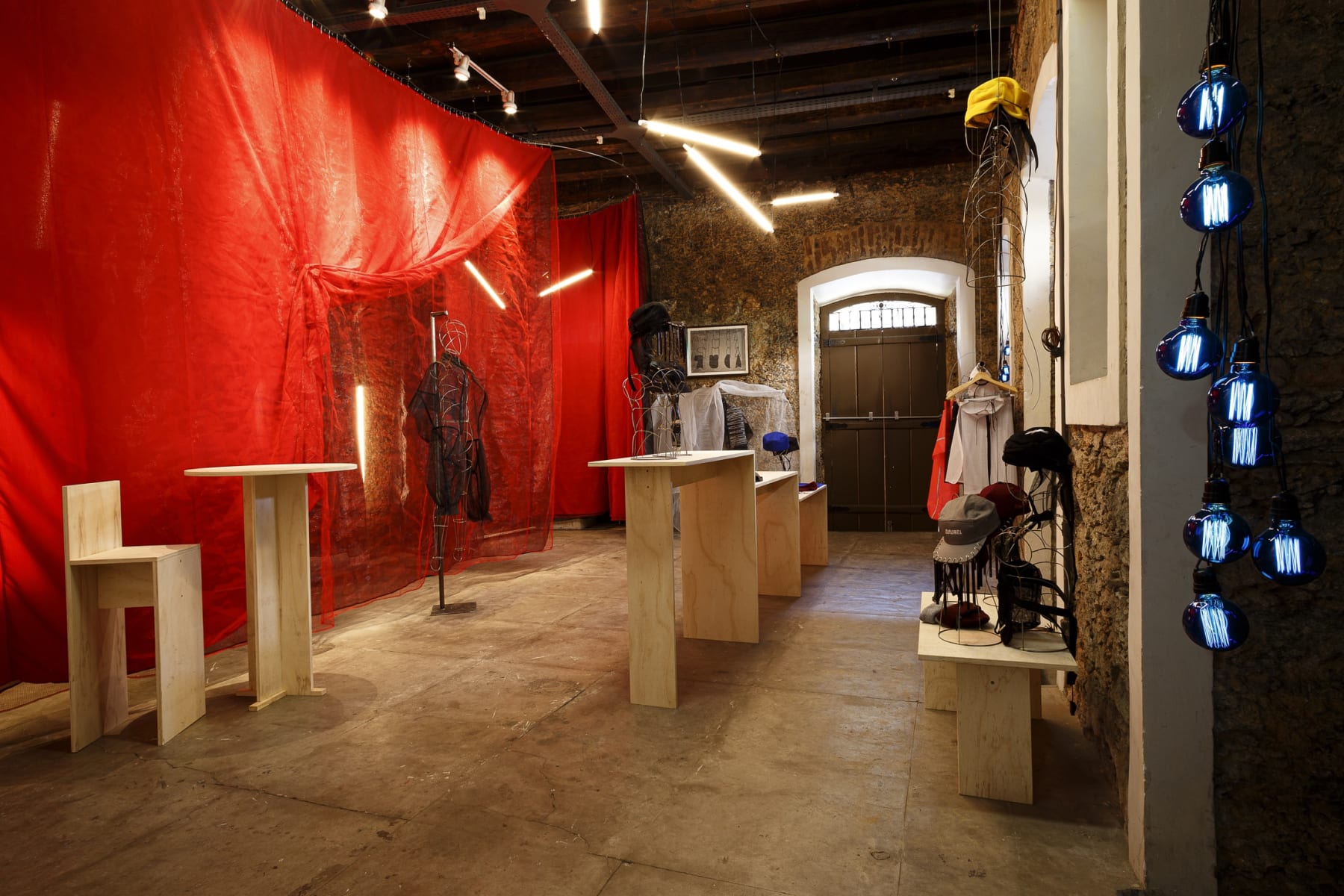Yellow Fever

Exactly ten years ago I was introduced to Vivian Caccuri by the anthropologist Hermano Vianna who was soon saying that we should do something together and, sure enough, we started working on a project called Pororoca Rave that was inspired by a work of Vivian's that had as its premise the recording of subcutaneous sounds, streams of noise arising from the rubbing of the skin on objects, clothes, fabric or coming from the blood flow in the veins and arteries, the absorption and movement of the viscera that compose us. A discovery of sound manipulation with an unusual effect that strictly fulfilled the purpose of a, let's say, work of art, to grab our attention, to introduce a new element into our perception of the world by opening an unprecedented portal of understanding. That's why I became a fan of this girl, this woman, her ideas and accomplishments. I am making this brief personal introduction just to say that ten years later she has surprised me, and all of us, again with an exhibition, a work that functions as a mini epic projection, a futuristic prospection of present-day Brazil. She does this by using the return of yellow fever, and all that it represents, of the eternal return of the eerily traditional Brazilian problems related to its famous configuration of islands of excellence surrounded by lagging marshes, as a launching platform for her images and materialized thoughts. Stagnant social waters.
It turns out that Vivian goes far beyond simply diagnosing or commenting on the scourges and ills of this sinister tradition. She bounces back without falling into sentimental utopias or paralyzing dystopias. As if she were a cybernetic alchemist, she takes the reins of Brazilian chaos and proposes a society strengthened precisely by its survival in this chaos. She creates the Neo-Brazilian.
We can glimpse a kind of pentagram of contemporary subjects and fetishes that make up this saga about present-day Brazil and its trends in the near future. Five images function as portals that lead us to perceive differently that which we call reality. Image number one: the most striking of the images is one that refers to a kind of sistine chapel of contaminations, mutations, viruses and the invasion of bodies and minds in our, still, so-called human societies. The arm of an allegedly feverish Adam held upright with his fingers being touched not by the creator of Jehovah but by pervasive mosquitoes that transform everything that has existed, exists and will exist in terms of biological, genetic movement on this planet. The arm, hand and fingers of this feverish Adam with several mosquitoes strolling over them quickly remind us of a twofold situation that is a paradox of our age: mosquitoes look like research drones (clandestine or not) taking skin samples and blood samples for some antibiotic, some improvement to the human organism. But it also represents the rottenness of gigantic sectors of the planet where civil waste is not recycled, where tiny surviving underworlds proliferate, turning people into fertilizers for eugenic experiments. This civil garbage also circulates, escaping from everything and carrying along the vectors of unknown diseases.
In Vivian's futuristic perspective feverish Adam's arm covered by mosquitoes throws open the genesis - and the creation - of the emergence of a possible new Brazilian, precisely out of this situation of chaos, crisis, vacuum, uncertainty, precariousness. In fact what happens in this country has always been marked by violence (even before the colonizers arrived, because as everyone knows, just like in the Carnival song Índio quer apito - the Indian wants a whistle, if he doesn't get it all hell will break loose, and this was the case long before the colonizers arrived), closed markets, widespread distrust, prey and corruption, slavery, banditry, in short, a whole menu of attitudes and social coexistence that pulls the carpet from under the image of a predominantly hospitable and welcoming Brazil for all types of humans. But in the intriguing peculiarity of Vivian's work, this tradition of fierce Brazilian struggle takes on more socially drastic, more cyberly bizarre, more biologically blunt contours because it is not the political, humanist institutions that lead the mutations, the genesis of the new Brazilian. It turns out that in Vivian's view, everyone is swallowed up along with the population by avalanches of Brumadinhos and Marianas scattered throughout the country. The feverish Adam's arm seems to come out of the rubble of one of these avalanches, both contaminated and resurrected by the mosquito vectors.
Transformations occur, but not through constitutional, juridical or revolutionary changes in political parameters, but in the biological structure of the surviving bodies, in the cognitive, mental capacity of these neo-Brazilians who, like our early ancestors, create, discover, a new language and new technological skills from collages of the remains of sound systems and pieces of everything, as well as re-editing what we know as prehistoric migrations. As a commission of paleontologists and archaeologists would say, "The Paleolithic is coming, people!"
In Yellow Fever, Vivian Caccuri disconcertingly explores, as no one has done before, the expanding universe contained in the maxim that Brazil will always be a futuristic ruin.
In using Yellow Fever and its repertoire of lower back pain, black bile vomiting, dizziness and intense bodily fever as well as its history of migration (the colonizers are its main carriers) as a visionary platform for her work, Vivian Caccuri offers a dive into the troubled, thought-provoking, precarious and fascinating history of Brazil and the science fiction-related speculation that abducts us to a humorous anomaly, a strange wonder, all at the same time.
The feverish Adam is the first and most extensive portal.
Image two: The Sesmaria Sound System.
As I said at the beginning, Vivian is a great creator and manipulator of sound systems that cage, transform, feed, expand, fragment, capture, channel, liquify, filter, mutate this creature called SOUND and its apostles. The noises, the incessant and insinuating vibrations that envelop and surround us. If Yellow Fever was her inspiration for this work and if mosquitoes are the vector choir that narrate the dramas generated by this disease and consequently narrate the trash science fiction epic embedded in the exhibition, it is obvious that our artist would engage in research on their buzzing sound. A buzzing that has been around for a long time, disturbing our consciousness.
In her research, Vivian found that sugarcane fields were a major focal point of mosquitoes. The overlapping of social, sonic, cyber and biological issues so dear to Vivian, has its second portal in sugarcane: the masters and the slaves, viruses, buzzing and mutations. In addition to the specific clothing to deal with the heat and the attack of insects.
What did Vivian create, then, by demonstrating once again her ability for artisanal invention, her talent for materializing objects and apparatus that are sculptures embodying symbolism in shock, situations in shock? She created a sound system that is based on one of the products of sugarcane, the popular rapadura . A sound system made of rapadura to house noises, sounds, a gigantic and incessant choir of mosquitoes announcing the arrival of mutations that will generate the neo-Brazilian. From a bowl full of boiling sugar, intermittent sound. Only Vivian herself, with her alchemical lust, her transformative vision could come up with this illustrative metamorphosis of her premises and research: the Sesmaria Sound System.
Image three: the pagodes on the walls that look like encephalograms, dazibaos of ruined statistics, fossilized abadás after a sudden swarm, or aprons of giant sonar recording machines are actually hybrids of mosquito nets and vibrant surfaces full of nuanced fabric. The neo-Brazilian human being, a totally muddy phoenix rising out of avalanches of contamination has, as well as developing a hearing capacity far superior to that which he had previously, intensified by the constant use of sugar in the ears, developed a kind of viennatone rapadura, an auditory rapadura which allows for the distinction of the various sounds of the mosquito. The pagodes also serve as parangolés. Garments protecting the screen of human skin.
Image four: If you have fun, if you are crazy about the festival of clothes and ways that people dress when you see them on a corner of any big city, you would freak out on the corners of the neo-Brazilian territories because most of the clothes were collages made with costumes created for the eradication campaigns of the superstar of mosquitos: Aedes aegypti. Some immunities were not forever. They had to be renewed. Hence the pagodes, propaganda clothes, and even mosquito rackets which protected neo-Brazilians in the short period between one immunizing bite and another. Because of these clothes they got the nickname of INSETO ARLEQUIM (HARLEQUIN INSECT), assuming the dirty and provocative posture that the mosquito embodied in the imagination of all with its mutant, deadly and sneaky capabilities. Always laughing at humans who think they are gigantic in their existence but have always been defeated by invisible spots on their skin.
Image five: Mariana Mad Max, Brumadinho Walking Dead.
With the pagodes preventing mosquitoes from entering his body, the singer goes through the shadowy franchises of Brumadinho and Mariana, I mean, other dams that collapsed generating a circuit of buried cities, heavy metal Pompeiis and unusual swamps multiplying all the typhoids, all the malarias, all the zikas, dengue fevers, chikungunyas and, of course, yellowish fevers that, after all, due to the mixing of heavy metals, some elements contained in the migratory fumes of deforestation and the most varied pollutants with the defense mechanisms of the human beings, generated unprecedented immunities in homopostsapiensneobrazilian.
Bonus: In the figure of Apolinário, a stylist from São Paulo, Vivian Caccuri had the perfect accomplice who was more than competent in translating her futuristic saga into the universe of clothes, pagodes, burkas, cloaks, parangolés, extravagant garments, translating an extravagant reality full of unusual technologies, unusual crafts, impressive material manipulations. There will be a shop with the creations of Apolinário at the exhibition.
The words virus, vector, vacuum, disease, vertigo, invaders are the abracadabras, the verbal talismans that open the portals of the pentagram of futuristic images that make up the core of Yellow Fever. Vivian Caccuri goes deep into the theme of organic mutations arising from the contamination that arose from the disasters. She goes deep into the ongoing record of Brazilian social precariousness. She goes deep into the observation / metaphor that people around the world are in one way or another closing or expanding themselves into viral societies, nowadays we are all invaders of bodies and we are unintentionally quickly transforming, perpetrating but at the same time full of life, the earth into a gigantic temple where the chief priests will be the insects and our bodies the most extravagant hosts, vectors of the final transcendence.
Vivian Caccuri continues to be, as this exhibition highlights, a rare beacon in the drowsy visual arts scene, illuminating our demanding, disturbed, hectic lives with her 360 degrees of powerful and visionary light.
Fausto Fawcett, 2019
